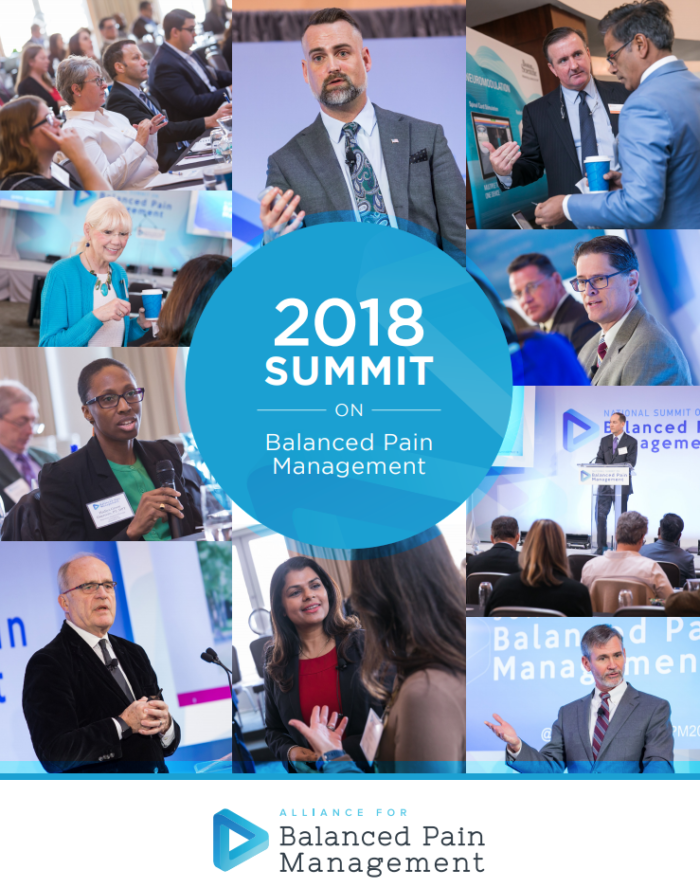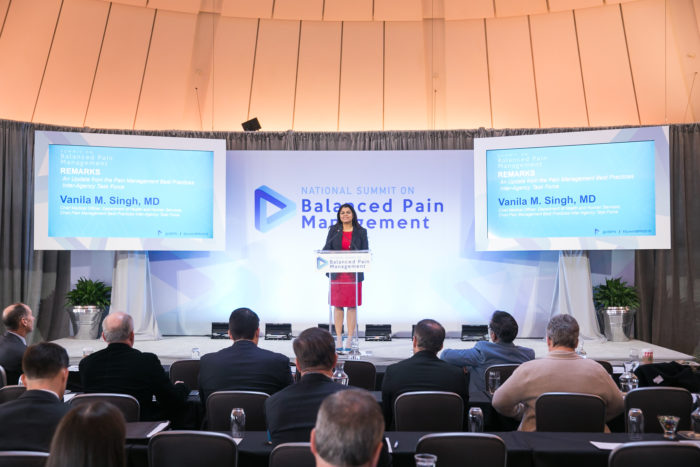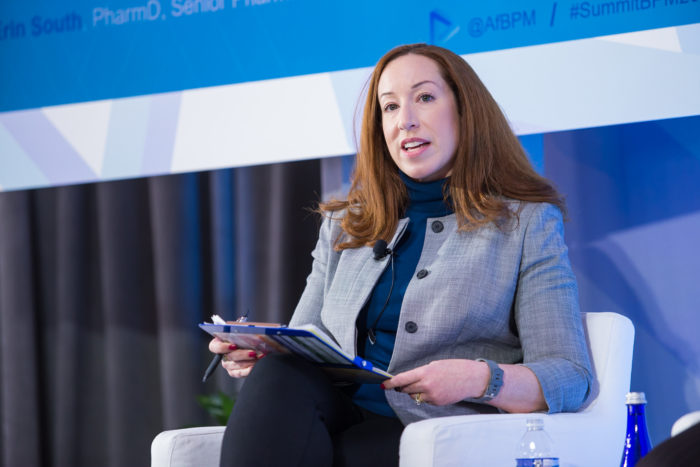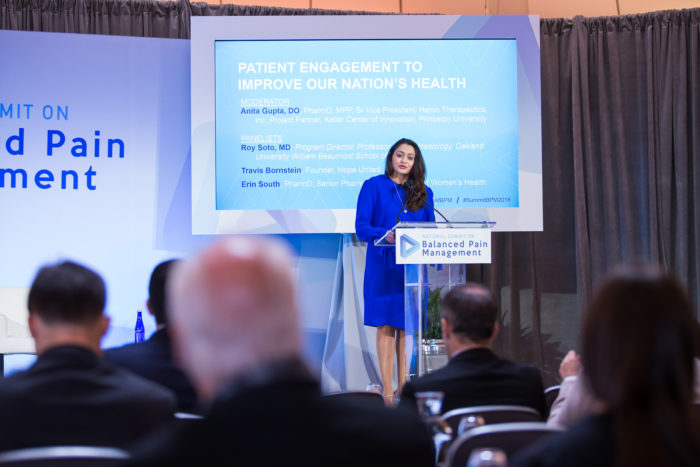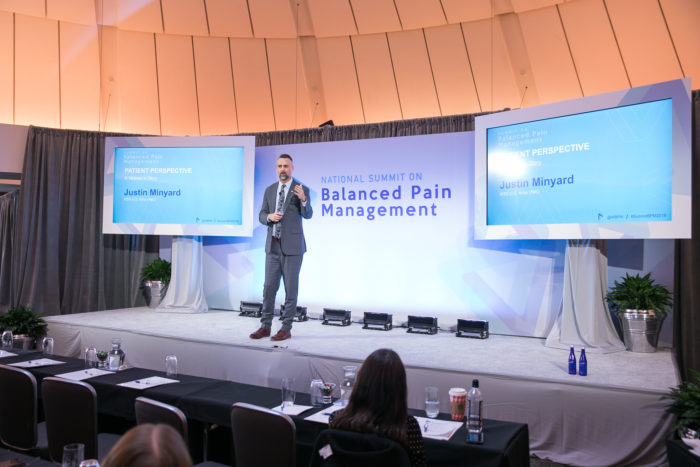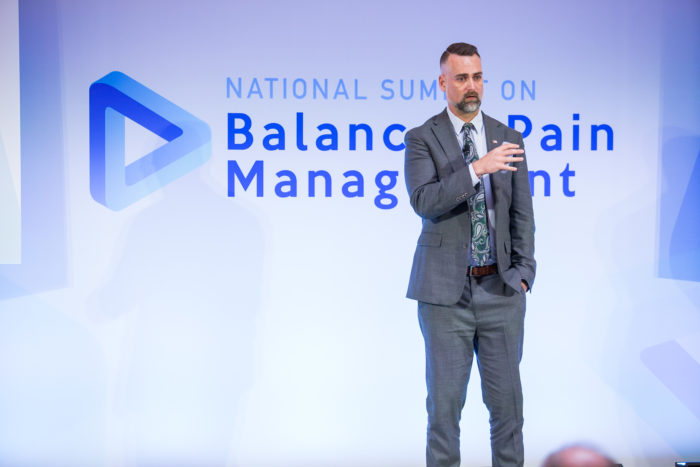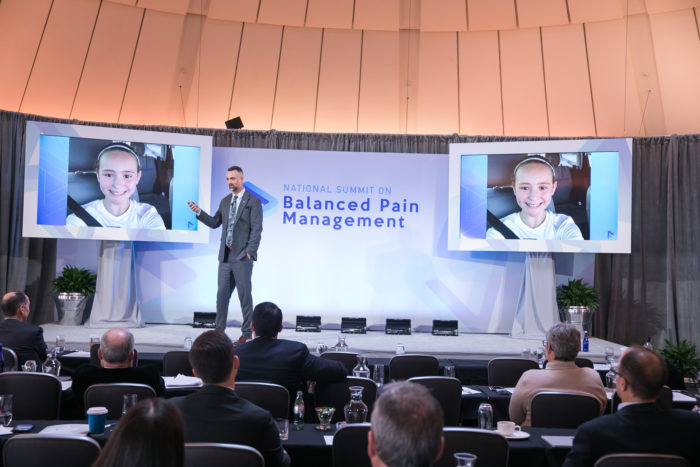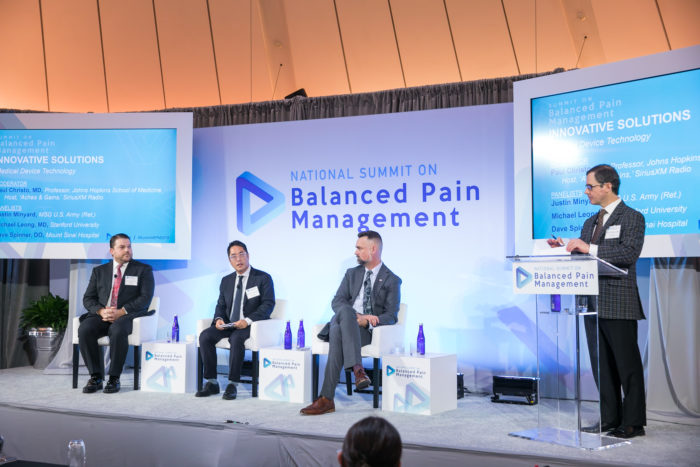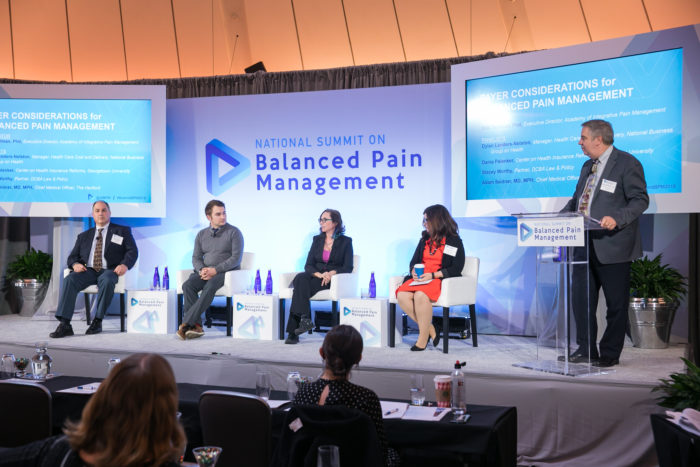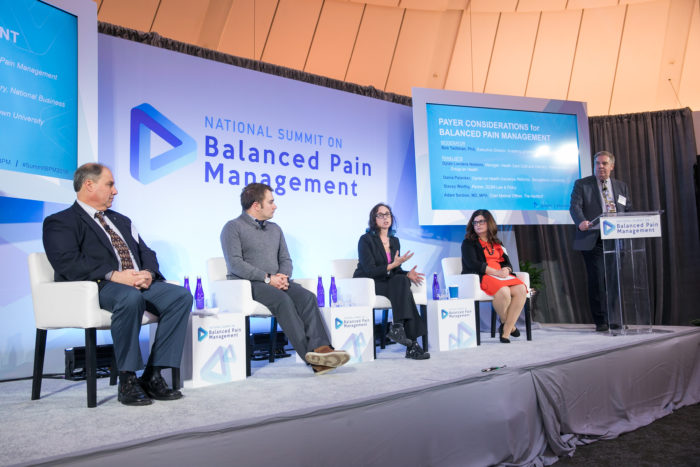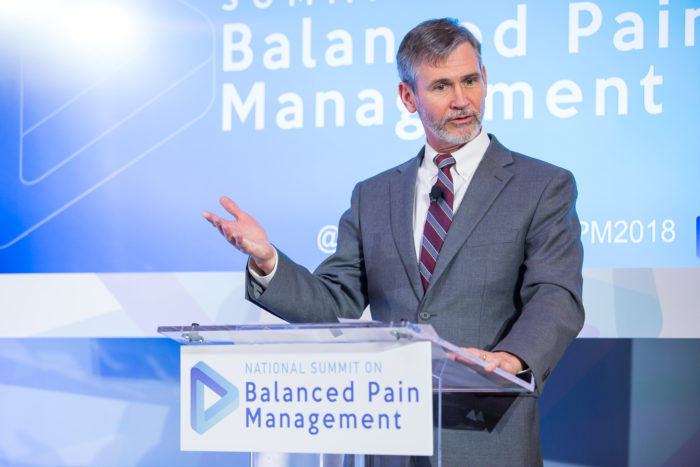2018 Summit on Balanced Pain Management
November 30, 2018

Before Justin Minyard was keynote speaker at this week’s fifth annual National Summit on Balanced Pain Management in Washington, DC, he was a respondent at the Pentagon on September 11. A high-level interrogator serving the United States Army during tours in Afghanistan and Iraq. And a prime example of why comprehensive, integrative pain management is critical.
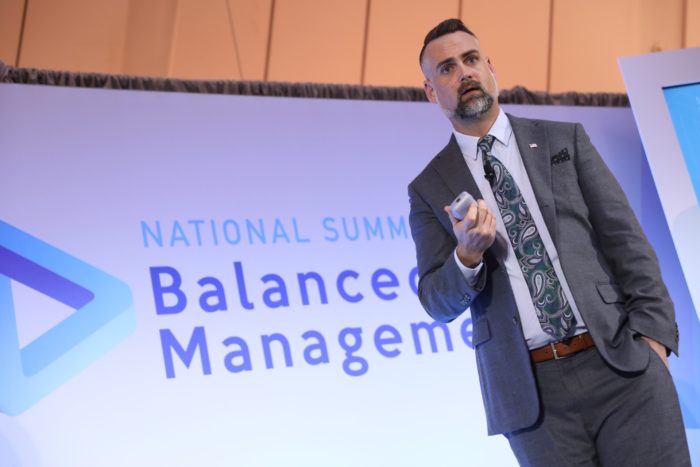
A retired master sergeant, Minyard sustained multiple injuries during his deployments. But only after six surgeries and a life-threatening addiction to prescription pain medication did Minyard find the balanced approach to pain that he needed.
With the help of a team of physicians and an implanted spinal device that electronically blocks pain signals, Minyard is back to being the father and husband he wants to be. “I’m in control of my pain instead of the pain controlling me,” Minyard emphasized, “I’m empowered.”
His theme of empowerment ran throughout the day’s summit, which drew policymakers, academicians, health care providers, patients and nonprofit leaders.
Patient Engagement
Empowering the patient begins with listening. So explained Anita Gupta, MD, of Heron Pharmaceuticals and Princeton University’s Keller Center for Innovation, who urged fellow physicians to “invest in the human relationship.” “Take time to know the patient,” she insisted.

Panelist Roy Soto, MD, an anesthesiologist from Oakland University William Beaumont School of Medicine echoed those sentiments. “We spend a lot of time talking about the medicine, the system, but we have to focus on the patient,” Dr. Soto noted.
Panelist Travis Bornstein agreed. Bornstein and his wife founded Ohio-based nonprofit Hope United after losing their young son to opiate addiction. The physician who initially prescribed opioids for their son’s sports injury didn’t properly explain the risks, Bornstein recalled. After “sitting in shame” for five years, Bornstein now honors his son’s memory by sharing his story and supporting families with similar struggles.
Another voice that’s important to the conversation is that of women, as Erin South from the Food and Drug Administration Office of Women’s Health explained. Women experience pain and withdrawal differently, and they are often told they’re “misstating” their pain, South explained.
Complementary Approaches
A better approach wouldn’t just incorporate patients’ voices. It would serve their bests interests. A panel discussion on comprehensive, integrative pain management outlined the importance of complementary approaches to pain, such as cognitive therapy and massage therapy.

Taylor Crouch, PhD, a pain psychologist from the Medical University of South Carolina, described how cognitive treatment can be a pivotal part of pain management, as chronic pain can often overlap with depression and anxiety. Crouch emphasized that these services must “be more accessible in terms of locations where patients can get treatment.”
Fellow panelist Niki Munk, PhD, of Indiana University pointed out that massage therapy can be beneficial for patients in pain but is often overlooked by insurers, who may view it as “a luxury, a pampering.”
And panelist David Morrisette, PT, PhD, of the Medical University of South Carolina spoke about the role that genetics could play in how some patients sense or respond to pain. He also emphasized the importance of preventive measures that address pain before it becomes chronic. Goal setting and cognitive therapy can be effective, he noted.
Jason Bellamy of the American Physical Therapy Association moderated the panel, noting the role of diet and exercise as critical but tough to implement. “It’s changing human behavior, and that is extremely difficult” Bellamy acknowledged.
Technology-Based Solutions
Beyond complementary approaches and behavioral changes, balanced pain management can also entail technology-based solutions.
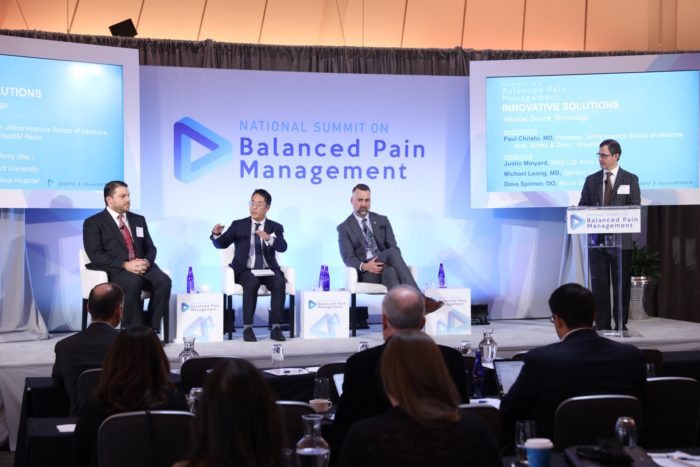
Lynn Webster, MD, of PRA Health Sciences described the role of virtual reality in addressing pain. While widely recognized as a source of entertainment such a video games, virtual reality can provide what Dr. Webster referred to as “distraction therapy,” offering short-term pain relief that may also have a lasting benefit. Some versions of virtual reality allow patients to visualize pain relief, which can translate to physiological benefits.
Michael Leong, MD, of Stanford University and Dave Spinner, DO, of Mount Sinai Hospital discussed the value of neuromodulation in a panel discussion with Paul Christo, MD, of Johns Hopkins University School of Medicine. Dr. Leong described spinal cord stimulation can disrupt dependence on opioids and can also provide meaningful pain relief for patients who want to be “awake” and “participate with family” rather than being overly medicated.
Dr. Spinner spoke on peripheral nerve stimulation, which has demonstrated significant pain relief for stroke victims. Explaining how the stimulation works, Dr. Spinner said, “If we can find a way to stop a nerve from firing, we could stop the pain.”
But treatments like virtual reality, massage therapy and spinal cord stimulation can help only if patients can access them.
Coverage Challenges
In a panel discussion on coverage for balanced pain management, Dania Palanker of Georgetown University’s Center on Health Insurance Reforms explained that certain trends don’t bode well for balanced pain management. Short-term health plans, for example, might exclude some complementary approaches.
Adam Seidner, MD, of insurance provider The Hartford suggested that many insurers were, however, trending toward “Center of Excellence” models, where reproducible results could prove that interdisciplinary programs are a good use of limited resources.
Dylan Landers-Nelson of National Business Group on Health noted that the opioid epidemic has sparked more interest by employers in how pain and addiction are treated by the health plans they offer their employees. But, “if you’re going to overcorrect by dramatically cutting down on opioid coverage, you have to have something to replace it with to treat patients’ pain,” Landers-Nelson emphasized. He noted that employers should think “comprehensively” about pain, substance use disorder and mental health.
Stacey Worthy of DCBA Law & Policy explained why policies should consider unintended consequences to patients. “Some states have gone too far,” Worthy argued, referencing laws on the duration or dose of opioids that could make it confusing for physicians treating patients in pain. For “a subset of patients with chronic pain,” Worthy emphasized, controlled medications may be part of the balanced treatment plan.
Bob Twillman, PhD, of the Academy of Integrative Pain Management, moderated the discussion.
Regulatory Efforts
Federal regulators are doing their part to drive solutions as well. Vanila M. Singh, MD, Chief Medical Officer at the Department of Health and Human Services, outlined the work of the Pain Management Best Practices Inter-Agency Task Force. While opioid-related deaths are down 1.4 million since 2015, addiction to heroin and the illicit use of fentanyl pose a growing problem for policymakers.
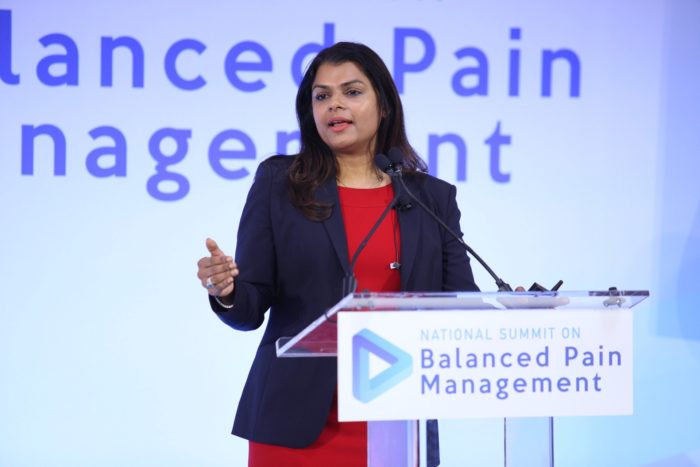
The Department of Health and Human Services continues to implement its five-point strategy for addressing the nation’s crisis. It “cannot be done without a multidisciplinary approach,” Dr. Singh emphasized. The approach also encourages education, access to care and acute pain guidelines for common surgical procedures
Conclusions
More than just public dialogue, the day’s proceedings are intended to fuel the call to action issued by Brian Kennedy, executive director of the Alliance for Patient Access, in his opening remarks.
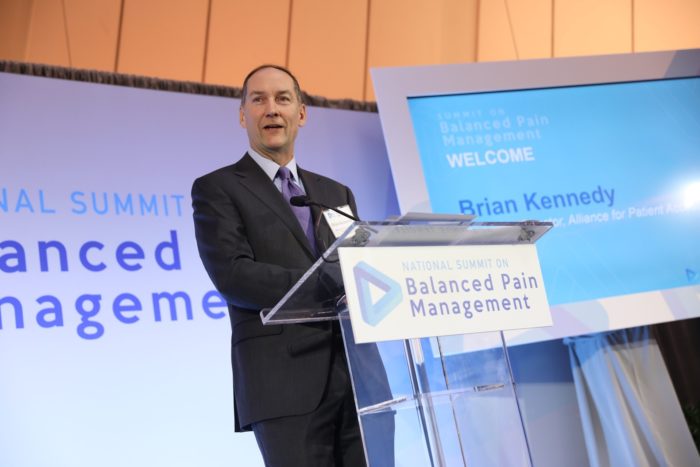
“America’s opioid abuse epidemic has brought the question of pain management front and center in the national conscience. Now, it’s on us. Not to stand by and hope that the policies that emerge from this crisis represent the interests of men and women across the country. But to lead – by defining and demanding policies that give patients access to balanced pain management.”
The National Summit on Balanced Pain Management was convened by the Institute for Patient Access and co-hosted by the Alliance for Balanced Pain Management and the Alliance for Patient Access. See #BPMSummit2018 for photos and tweets from the day’s event.
Tags: Pain
Categorized in: Summits


